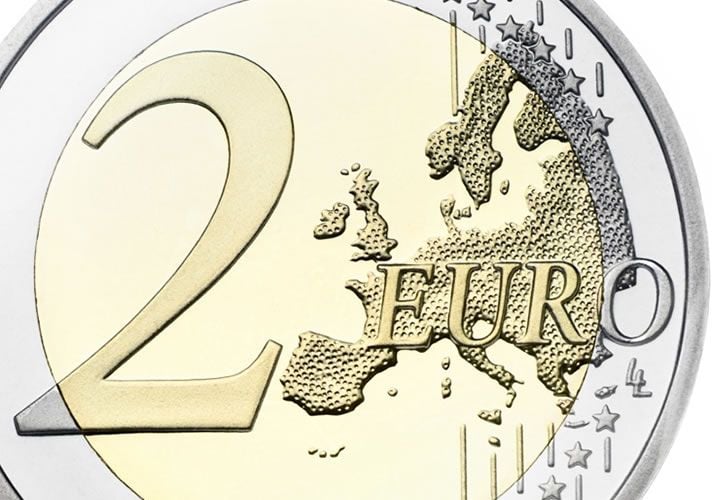EUR/USD: 1.1976 the Last Defence of September’s High - Washington in Focus
- Written by: James Skinner
-

EUR/USD has failed to sustain a break below key support. Now, turmoil in the White House, technical factors and faster economic momentum are fuelling a rebound.
The Euro-to-Dollar has resumed its northward climb, supported by political news-flow, after a key downside support level held firm against multiple challenges during the current week’s trading.
Three times the currency pair has attempted to break below the all-important support in the 1.1824 region this week, only to be repelled by a steady bid from the market.
“EUR/USD has stalled just ahead of the 78.6% retracement at 1.1976 and is consolidating,” says Karen Jones, a technical analyst at Commerzbank. “A close below 1.1774 55 day ma and preferably below 1.1712 the recent low is needed to alleviate immediate upside pressure.”
Jones says 1.1976 is the very last line of defence before the 1.2092 September high, which is also a two and a half year high.
The Euro-to-Dollar pair has been under pressure in recent days from rising US bond yields which, fuelling a resurgent greenback, helped to drive the exchange rate down to 1.1824 and below three times before Friday.
Poorer than expected inflation data, in the morning session Thursday, was behind the latest challenge to the support level in the depths of the 1.1800 handle, but the downward move didn't last long.
“Short term weak inflation data does not pose a threat for the euro – with the exception of massive price falls,” says Thu Lan Nguyen, a strategist at Commerzbank. “Instead appreciation potential dominates if economic momentum in the euro zone continues to develop positively or if the price data were to surprise on the upside for a change.”
Despite recent unhelpful data, the Eurozone economy has strengthened in recent quarters, to the point where many economists now see it growing close to 2.3% in 2017.
“If EUR/USD 1.18 holds, that paid will still be giving a good impression of being in a rising channel that is going to re-test 1.21 in due course,” says Kit Juckes, chief foreign exchange strategist at Societe Generale.
Above: EUR/USD weakness in week to Thursday PM, and subsequent rally.
The pair has made a convincing break higher since noon Thursday, drawing support from renewed concerns over the stability of President Trump's administration and uncertainty over the fate of tax-reforms.
The senate is scheduled to vote on its own version of the Tax Cuts and Jobs Act at 11:00 am Eastern time Friday.
The bill’s clearing of the senate gauntlet will pave the way for a joint committee of senate and house republicans to sit down and craft a unified bill that can gain widespread support across congress.
Friday is, therefore, a pivotal moment for the tax reform narrative that has propped up the Dollar in recent months, but it won’t be plain sailing.
The Euro-to-Dollar pair is also being aided by renewed concerns over the stability of the Trump administration in Washington - which flared again after the New York Times reported the White House is preparing to replace secretary of state Rex Tillerson.
Tillerson, former CEO of Exxon Mobil, is one of few credible big-business faces to have signed on with the new administration. Questions over his future follow earlier concerns over whether the administration would be able to retain Goldman Sachs president Gary Cohn.
Above: EUR/USD at weekly intervals. Captures 2017 rally and subsequent pause.
“After a surprisingly fast rally in H1, Euro bulls are getting used to watching paint dry instead, but patience should still be rewarded,” adds Juckes.
New momentum behind the continental economy already has the European Central Bank moving toward an exit from its quantitative easing program, which is expected to begin in January with a reduction of monthly purchases to €30 billion, from the current €60 billion.
“Assuming the euro area continues picking up momentum, QE will come to an end, potentially as early as next September. The focus then will switch to the timing of the ECB’s first rate rise,” says David Owens, an economist at Jefferies.
Current estimates of 2.3% growth imply the Eurozone expanded at its fastest pace since the debt crisis during 2017.
“But, from where we are now it may not be asking much for euro area GDP growth to hit 3% in 2018, says Owens. “Assuming 2017 ends on a high, then it is perfectly conceivable that in the year to Q3 2018 we see GDP printing 3% on year.”
Get up to 5% more foreign exchange by using a specialist provider by getting closer to the real market rate and avoid the gaping spreads charged by your bank for international payments. Learn more here.




